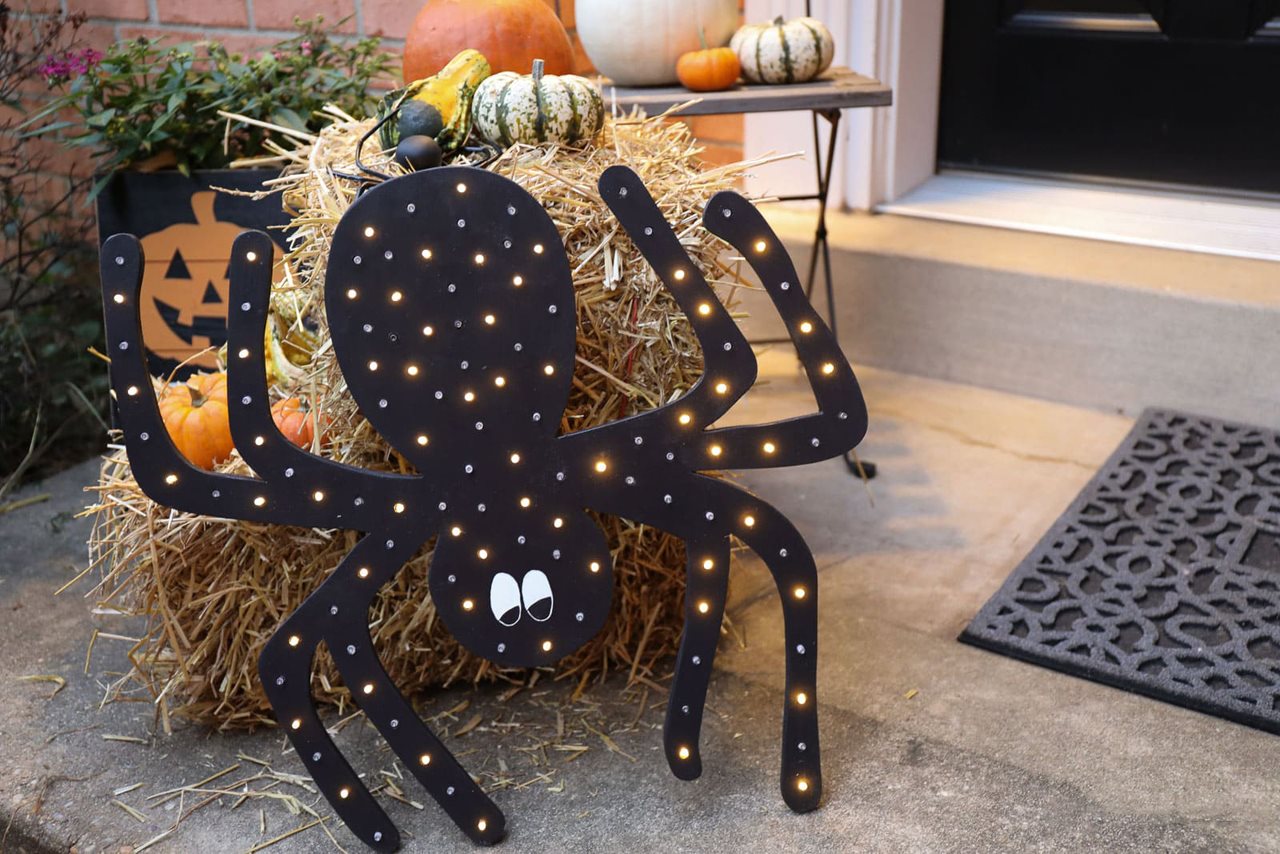
It’s that time of year again, time to decorate your home with all things fall, from pumpkins to leaves and of course, Halloween decorations! Whether you go all out or like to add a few decorations here and there, this adorable DIY light up spider is the perfect addition to anyone’s seasonal display — and great for any skill level to make! Thrift Diving’s Serena Appiah shows us how you can make this project at home with only a few materials and tools from Arrow Fastener. Even better, you can follow this same process for any seasonal décor as long as you change the shape (think holiday wreath, tree, etc.).
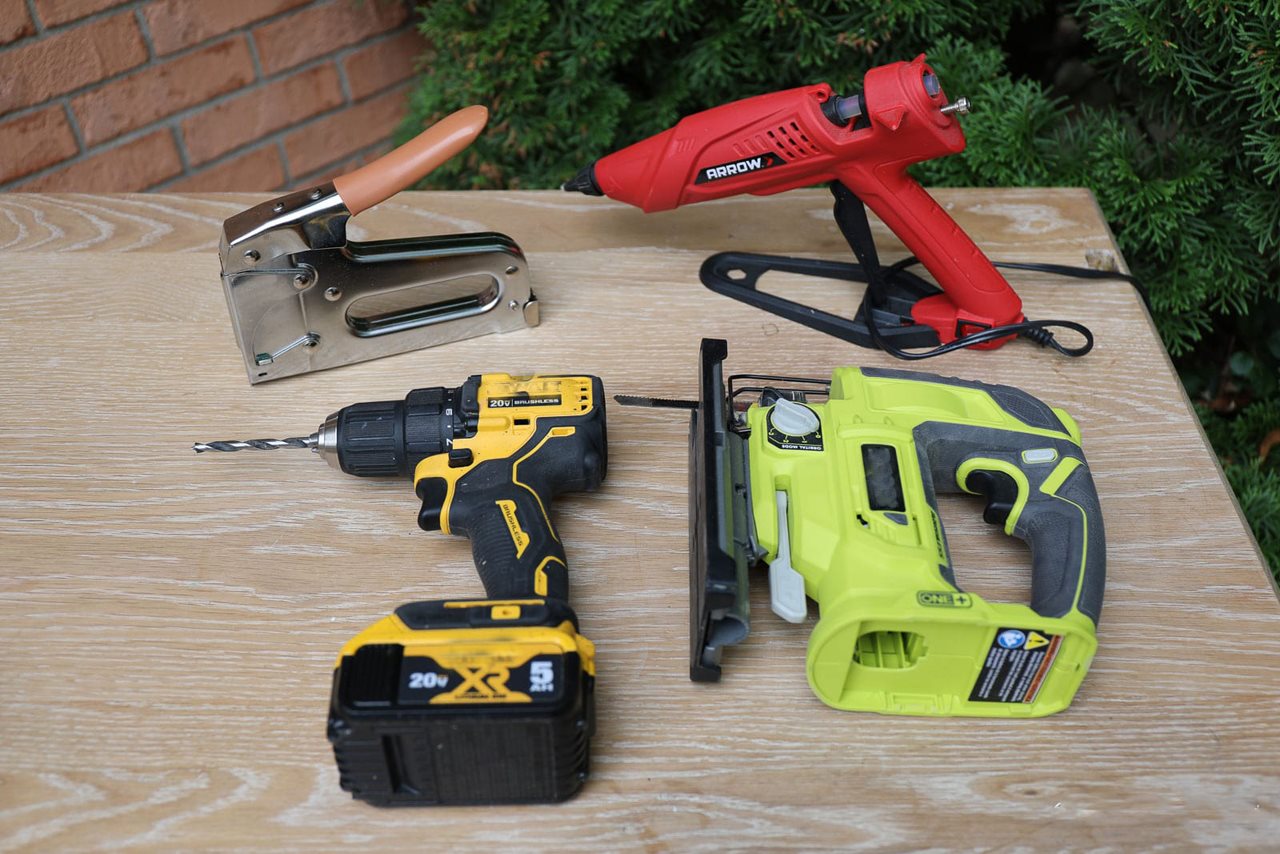
Tools you’ll need:
- Arrow Fastener T25 low voltage stapler
- Arrow Fastener T25 staples
- Jigsaw (with a jigsaw blade)
- Power drill (with a brad-point drill bit. The size of the drill bit will depend on the size of the lights you’ll be using.)
- Arrow Fastener GT300 Glue Gun
- Clamps
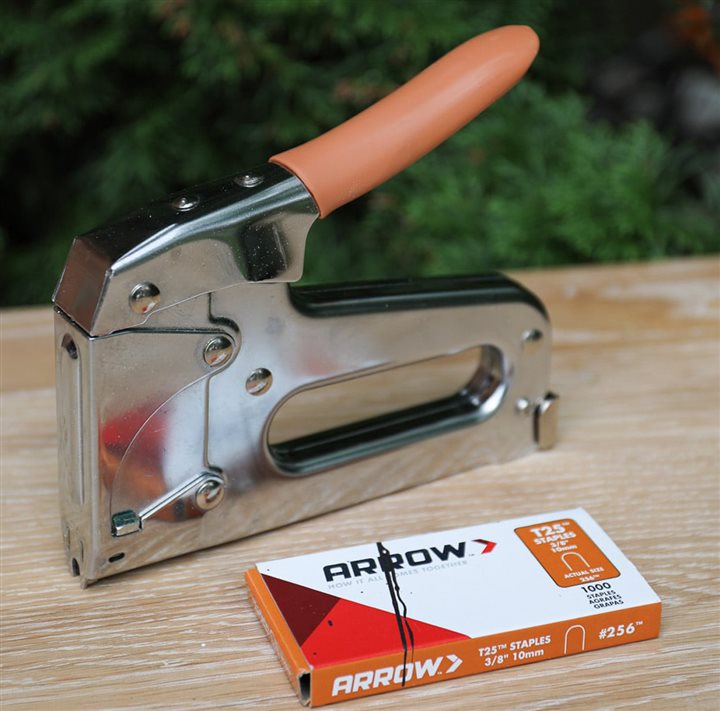
With the holidays here, many people are planning to hang lights (or do home improvement projects that involve low voltage wires). The most secure and safe way of stapling wires is with a low voltage stapler like the T25.
Other materials you’ll need:
- 2′ x 4′ piece of plywood (choose either 1/2″ or 3/4″ thickness)
- Spider pattern
- Indoor/outdoor lights
- Scissors
- Black paint (get the small sample pots from the home improvement store)
- White craft paint
- Scrap board
- Paint brush
- Thin craft paint brush
- D-ring hooks for hanging
- Wall anchors with screws for the drywall
- Tape
- Velcro or command strips for attaching battery pack to the back of the spider
- 150-grit sandpaper
- 220-grit sandpaper
- Pencil
- Safety glasses
- Dust mask
1. Create your pattern
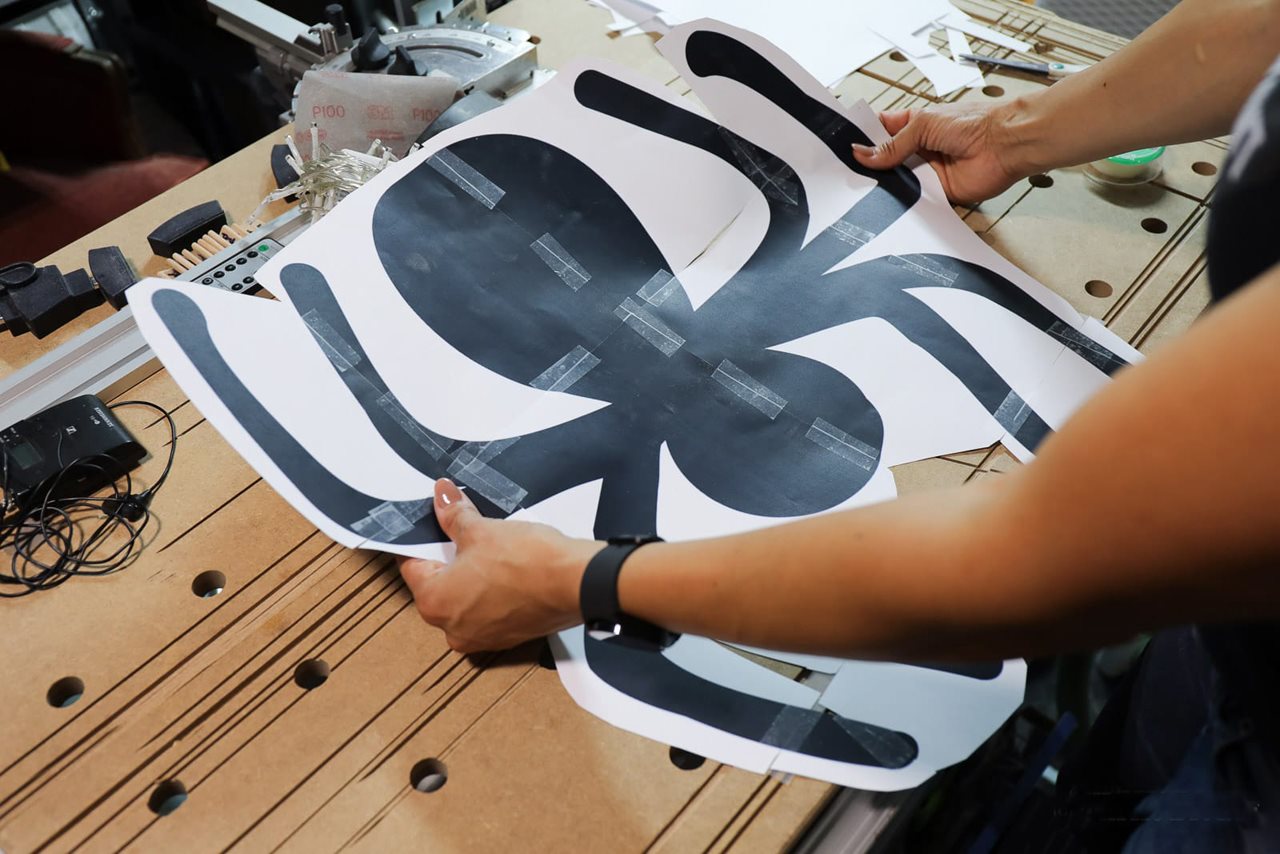
To create a large template use a poster-generating website to create custom-sized posters.
Upload a picture to the site, then decide how many pieces of paper you want to print on to create a large picture or poster. This will create a PDF file of your large spider in a series of sheets of regular printer paper. Once printed and taped together, cut out the image.
2. Trace your pattern onto the wood
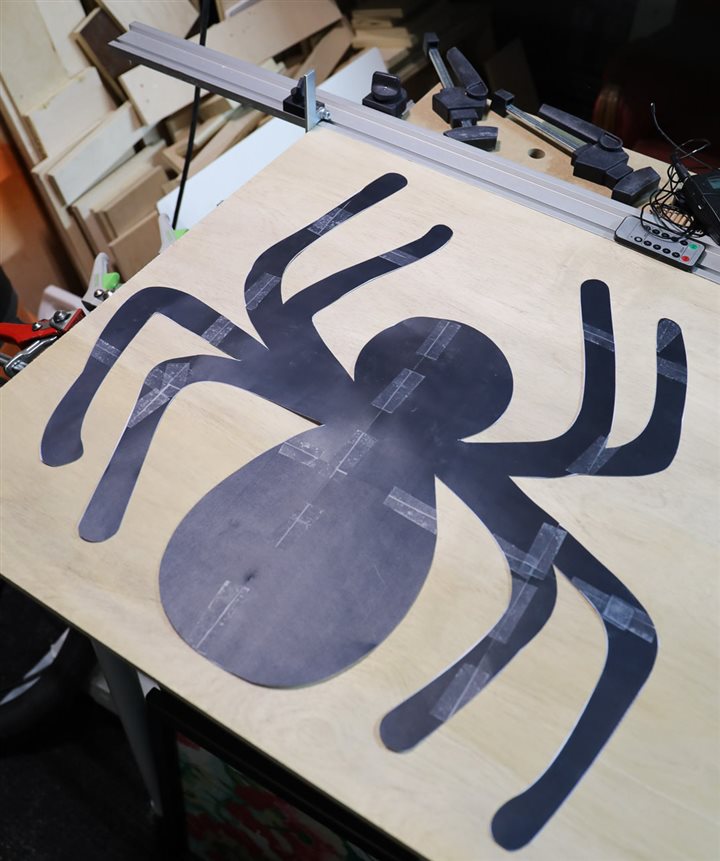
Carefully trace the pattern onto the wood, making sure the image doesn’t move. Use something heavy (like your cell phone) to keep it in place while tracing.
Use either 1/2″ or 3/4″ thickness of wood. If you’re using lights with a long bulb or base, use a thicker wood to accommodate the length of the lights. Thinner wood can be used with smaller or shorter lights. If your trace lines are too light, use a pencil to darken them, or even a black marker so you can see them when cutting out the shape.
3. Cut out your spider
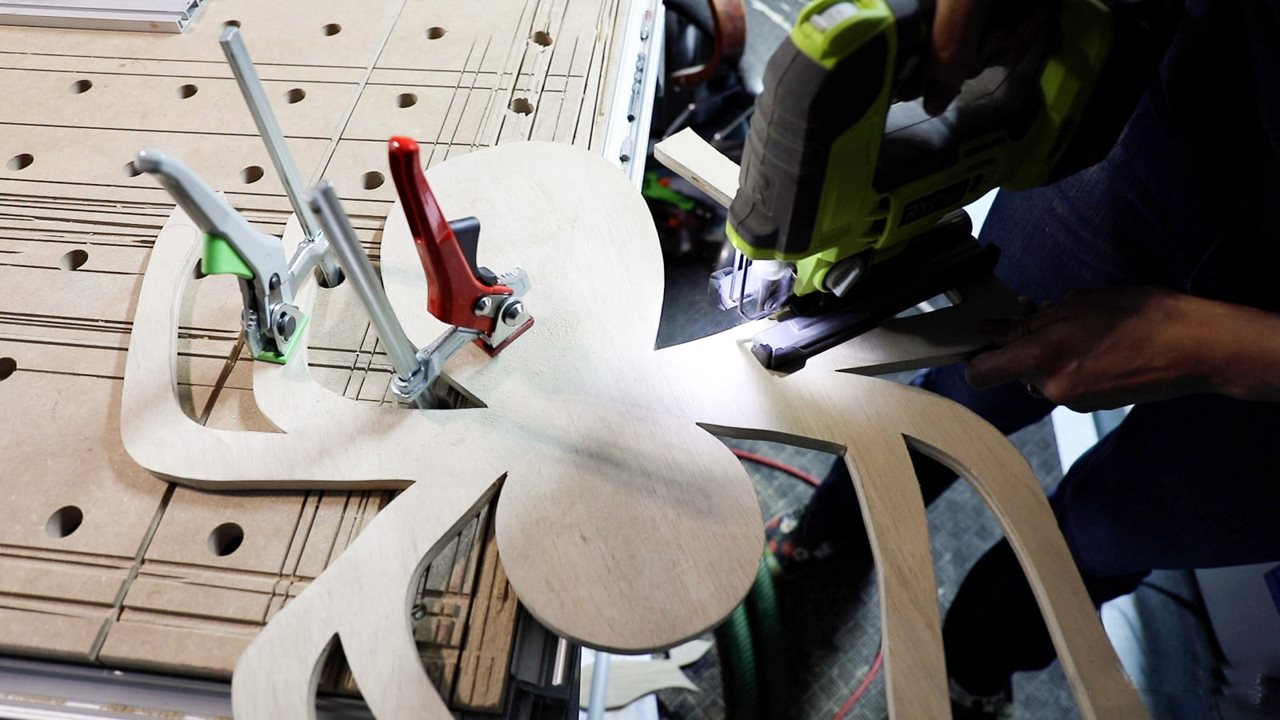
Carefully cut around the round edges.
If you’re new to using a jigsaw, be sure to watch or read this tutorial on how to use a jigsaw. The most important thing is to clamp your wood to a workbench or a table, while leaving it hanging off the edge securely (without any movement or shifting), with an open space below, to begin cutting out the spider.
4. Mark where you’ll want the lights to be and drill holes
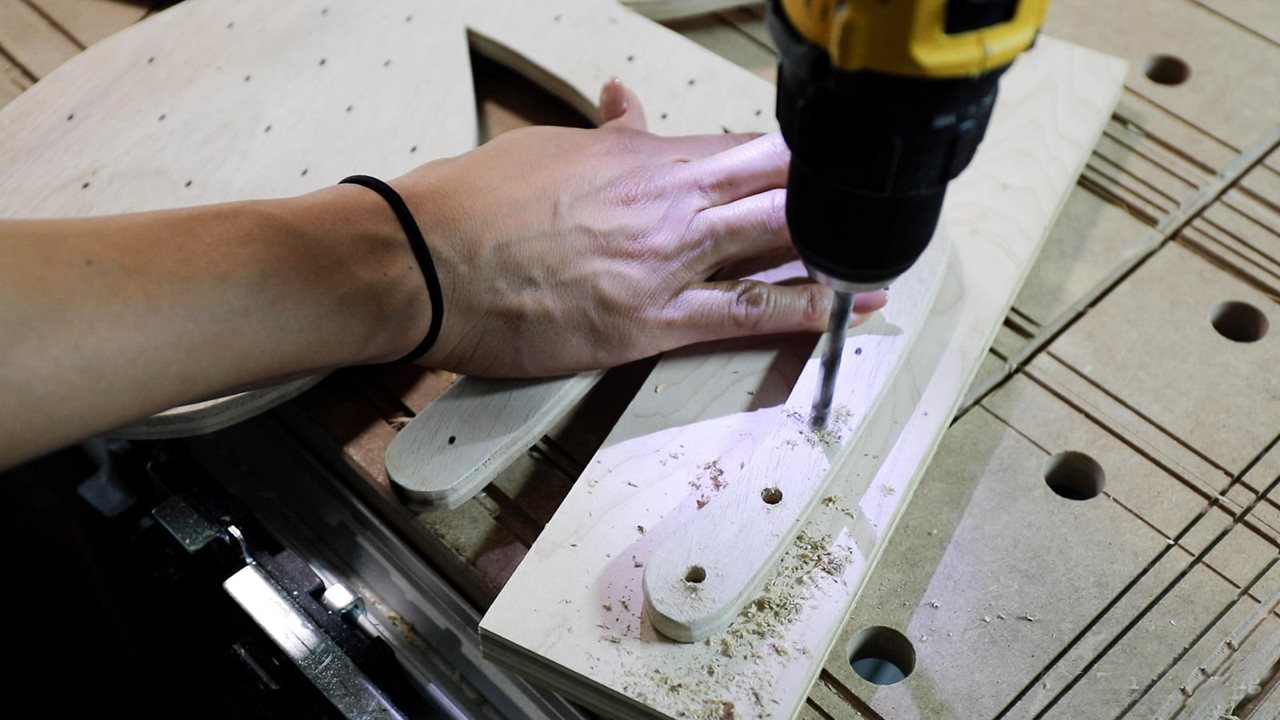
Use a marker or pencil to mark where you’ll want the holes for the lights, evenly spacing them out.
You’ll need a drill and a brad point drill bit for this step. The size of the drill bit will depend on the lights you’re using. You’ll also want to put a scrap piece of wood underneath when drilling. Test-fit your lights to make sure the bulb will fit through the hole before drilling all of your holes.
5. Sand the holes smooth
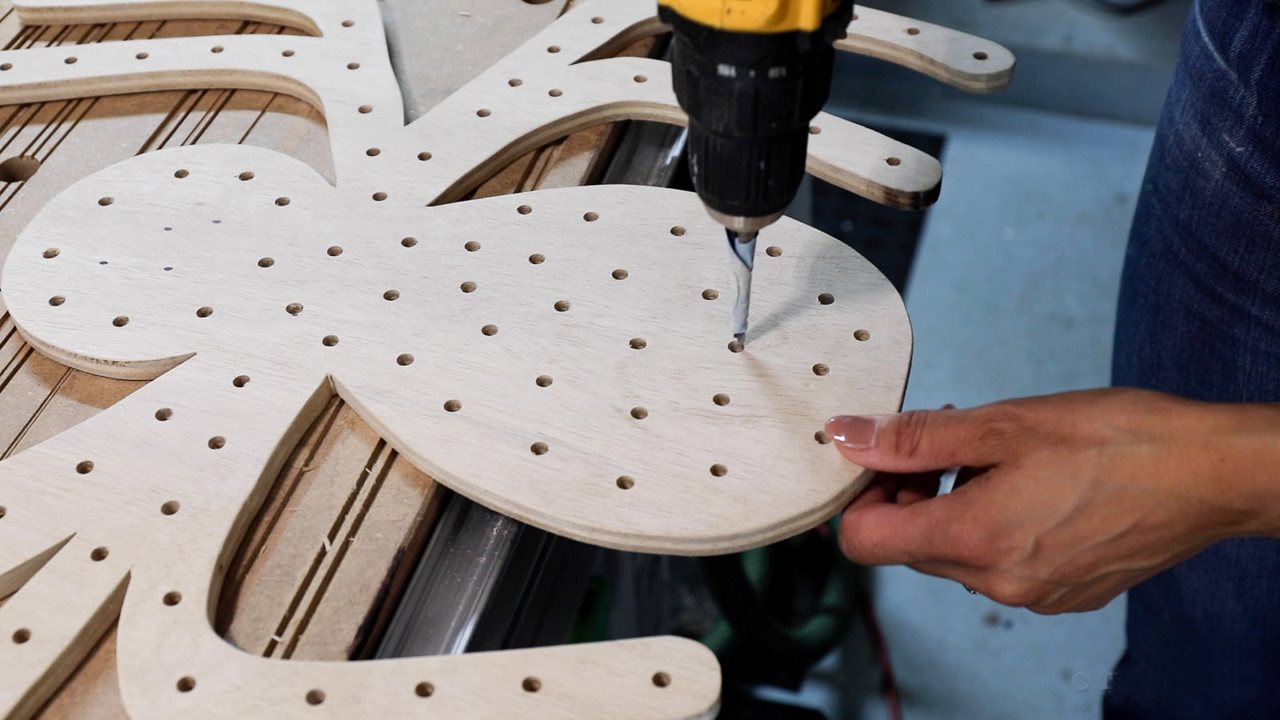
Sanding will help clean the holes before putting the lights in.
Tape the end of a piece of fine sandpaper (220-grit) on the drill bit, and wrap the sandpaper around a smaller drill bit. Slowly run the small drill bit through each hole, gently sanding the edges smooth. Sand the back of the spider, too, to remove any splintered wood that occurred.
6. Paint the spider
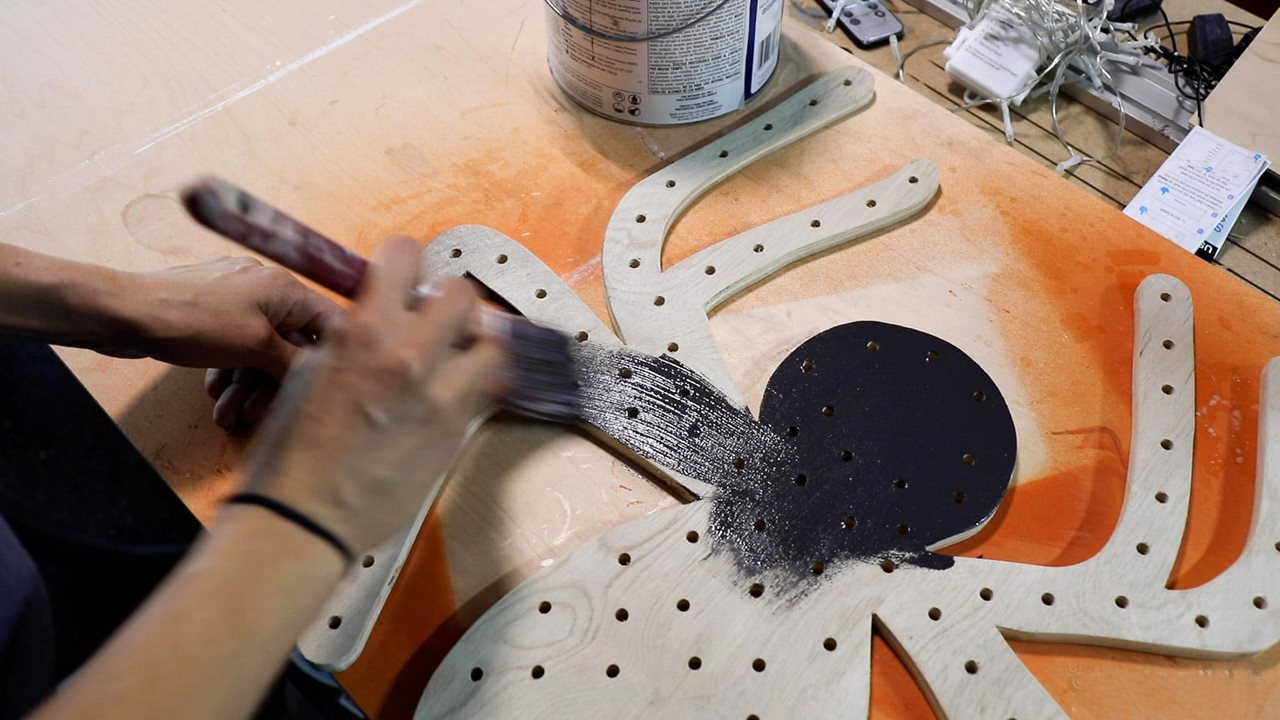
Use exterior paint if you’re putting your spider outside to protect the wood better. If it will be inside, use a black chalk paint, or get a small sample pot of paint from the home improvement store to use for this project. Use a small paint brush to slather paint into each drilled hole, to protect the wood, and to prevent the light-colored plywood from showing through.
7. Attach the lights
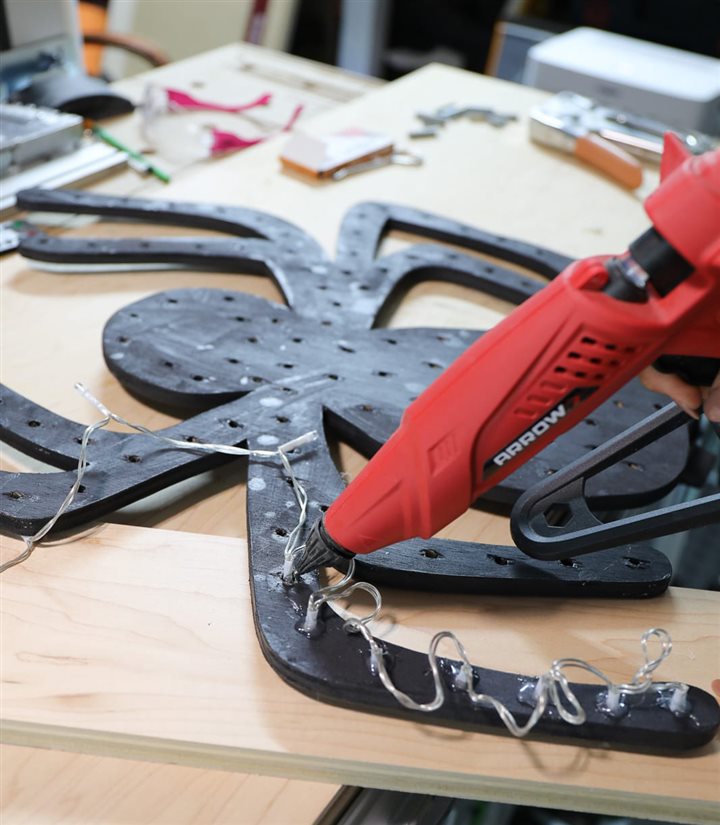
The Arrow Fastener GT300 glue gun and T25 low voltage stapler will secure the lights in place.
Use the Arrow Fastener glue gun to secure the lights into position where you want them, preventing them from going through too far. Next, the T25 low voltage stapler allows you to secure the wires in place on the back of the spider without cutting into the wires. The rounded T25 staples allow ample room for wires for lighting such as this, which is perfect for holiday and crafting projects where you’re using lights! Gently twist the excess wire and lie the wire loop flat and secure to the wood using the T25 low voltage stapler.
8. Attach the D-ring hooks and battery pack
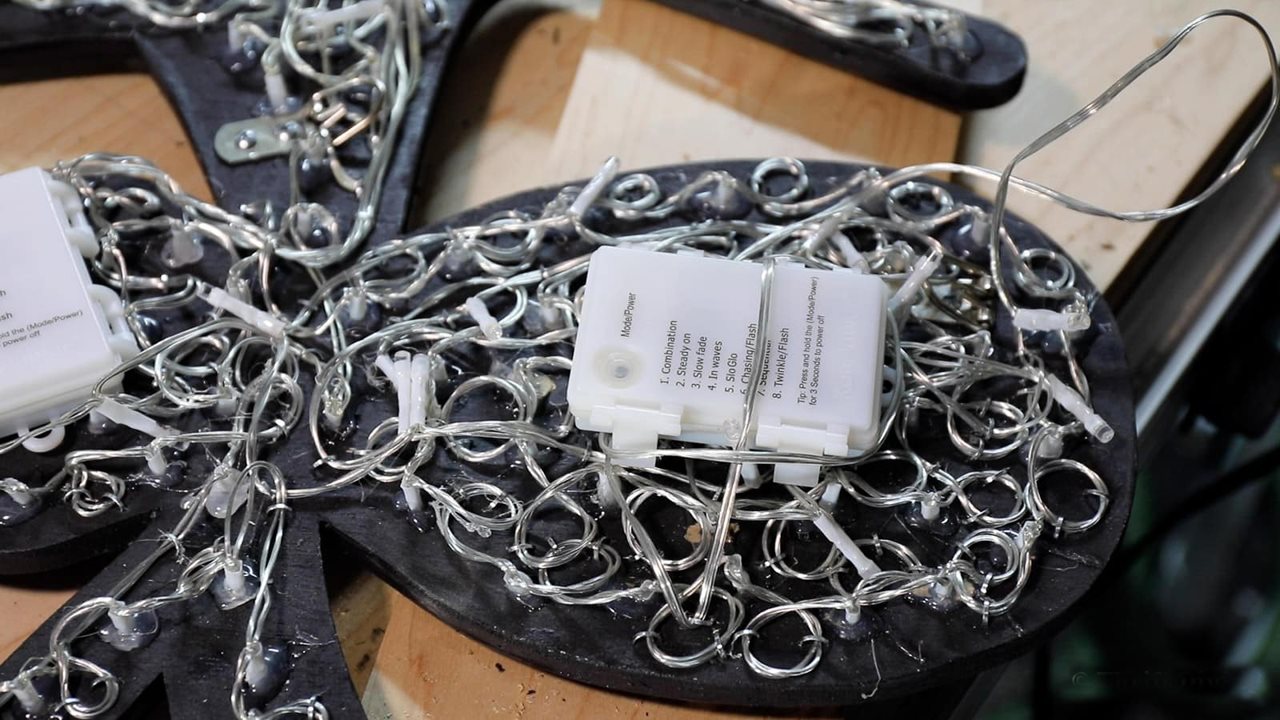
Be sure that the wires aren’t visible from the front of the spider.
If you want to hang your spider on the wall, you’ll need to plan on where to screw D-ring hooks onto the back of the spider. Also, to attach the battery pack to the back, simply set it on the wires and use some of the excess wiring to staple it across the battery pack to hold it in place.
Lastly, paint some eyes on the front of the spider. Leave a portion of the spider free of lights to do this.
9. Hang or place on your porch!

Finally, you’re done with your Halloween light-up spider!



